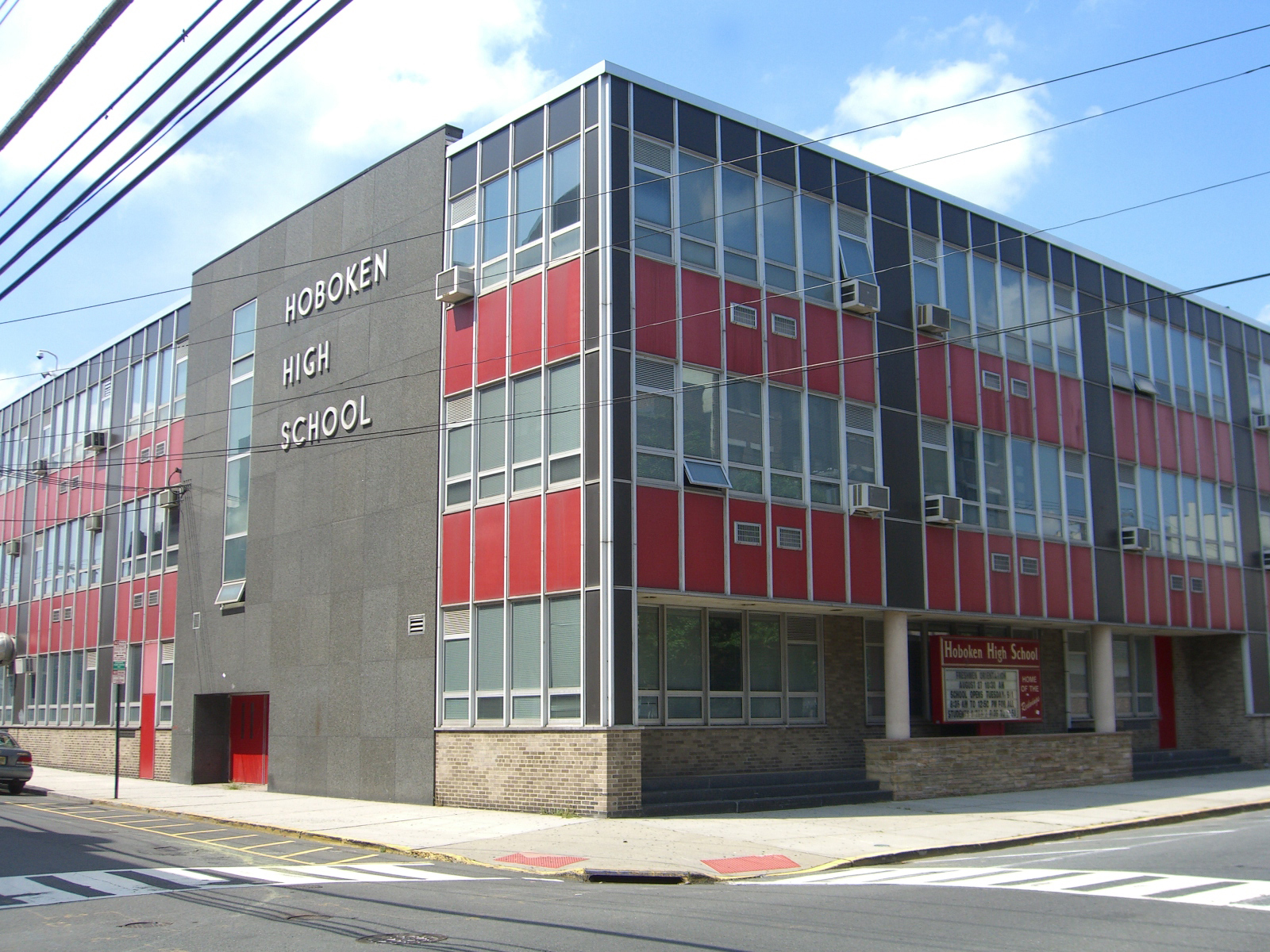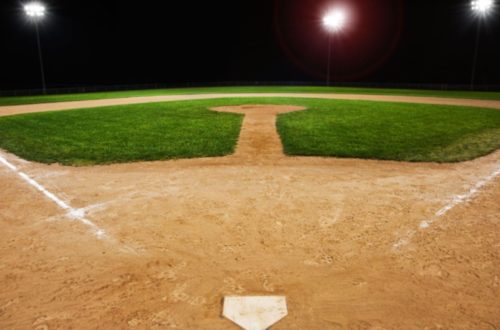How COVID-19 Changed College Athletic Recruiting
 Hoboken High School in Hoboken, New Jersey (Photo/Luigi Novi -Wikimedia Commons)
Hoboken High School in Hoboken, New Jersey (Photo/Luigi Novi -Wikimedia Commons)
By Nicole McNulty
April 19, 2021
ARCELIA MARTIN, HOST: On average only about 6% of high school athletes go on to play sports in college. In a normal year, graduating seniors would be signed to their college teams by now. But COVID has disrupted this cycle. Nicole McNulty explores what that means for kids hoping to play sports in college.
NICOLE MCNULTY, BYLINE: Tyler Sims has been playing basketball since he was 9 years old. And like a lot of kids.
TYLER SIMS: My dream school is definitely Duke University. You know, I’ve been watching them since I was little. That’s my favorite basketball team.
MCNULTY: That would be tough enough any year. But with the pandemic it’s even harder. Tyler is a 17-year-old senior guard on the Hoboken High School boys varsity basketball team. Normally, coaches would be in the stands watching him play. But this year, they can’t watch in person. So his only way to get in front of them is his highlight reel. He had to make it himself. His friend filmed it. Here’s a clip of him making a layup in his red Number 2 jersey.
TAPE: [Basketball game.]
MCNULTY: Highlight tapes were always a part of the process – videos players make and send to colleges. But this year, his video might be his only chance. And his season was shorter. He’s played half as many games.
SIMS: I’m nervous, but at the same time, I’m very confident that, um, I’ll be in the hands of the right school. I’m pretty sure that I’ll play college basketball.
MCNULTY: Still, Tyler, like many other kids in the U.S., is now behind the ball. The recruiting process usually looks like this:
TIM NEVIUS: It’s about getting the athlete recognized by a college coach.
MCNULTY: That’s Tim Nevius, a lawyer who works with college athletes on eligibility and other issues.
NEVIUS: And then that coach making contact with them via email, telephone and establishing a connection and then offering a scholarship or a roster spot or admission.
MCNULTY: Nevius says the COVID disruption has created two major problems. One of them is what kids like Tyler are dealing with.
NEVIUS: Because of canceled seasons or postponement or the inability of coaches to travel, the athletes aren’t actually being seen playing their sports as they normally would.
MCNULTY: And the second problem? Overloaded rosters. Because of the pandemic, the NCAA extended college players’ eligibility. Coaches can hold onto their seniors for another year. That means fewer spots for high school hopefuls.
NEVIUS: For the incoming freshmen, then, that means that they’re faced with even a larger roster of juniors and seniors than they otherwise would have been.
MCNULTY: Take Bloomfield College in New Jersey, a Division II school. Gerald Holmes is the basketball coach there. He’s bringing back three of his seniors this fall. That only leaves room for three incoming freshmen. He might be able to take one more, but there’s another problem. This year the rules are more flexible for transfer students. They’re bigger, faster, stronger.
GERALD HOLMES: A lot of coaches would prefer to have a transfer versus a freshman. So, high school kids are taking the brunt of that.
MCNULTY: This year there are many new rules: each sport and division has their own. And the pandemic has changed a lot of them. An already complicated situation is worse — everyone from coaches to parents and students are confused.
HOLMES: It’s almost like the wild, wild west out there.
MCNULTY: For high school athletes, it’s a struggle to stand out. Holmes says he gets at least 100 emails a day from recruiting services and high school players. He agrees, the ripples of COVID are going to be felt in the recruiting process for years.
HOLMES: In reality, this is going to be a full cycle of four years, is going to be because a kid who is a freshman for me this year is still a freshman next year.
MCNULTY: The rules say that if a college player’s season was disrupted by COVID, they can play an extra year. As for Tyler, the 17-year-old in Hoboken, he sent his tape to a few schools. But no one knows when he’ll find out for sure about making a team. If he doesn’t get in this year, he’ll wait, keep training and try again next year.
Nicole McNulty, Columbia Radio News.
columbianewsservice.com/2021/04/19/how-covid-19-changed-college-athletic-recruiting
This story first aired on Uptown Radio.
About the author(s)
Nicole McNulty

Nicole McNulty is an audio journalist based in New York. She was born in Texas and spent her adolescence in Germany and Colorado. After traveling in her van for two years she now calls the city home. Her freelance print work can be found in The Boulder Weekly, The City Weekly and The West Side Rag. Nicole is currently studying at Columbia Journalism School where she’s focusing on crafting audio stories for Uptown Radio. Connect with Nicole on Twitter @nicole_mcnulty and via email nicole.mcnulty@columbia.edu


